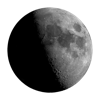Avior - ε Carinae (epsilon Carinae)
Avior, also designated as ε Carinae (epsilon Carinae), is a variable giant star of spectral class K3 in the constellation of Carina.
Avior visual magnitude is 1.86, making it the 38th brightest star in the sky. Because of its brightness, Avior is clearly visible to the naked eye when observed from locations with dark skies, and should be also quite easily visible from light polluted areas.

Celestial Coordinates
Apparent
J2000
Galactic Coordinates
Finder Chart

Magnitude, Color, Spectral Class
The red dot in the diagram below shows where Avior is situated in the Hertzsprung–Russell diagram.

Distance, Radial Speed, Proper Motion
Avior is distant 631.78 light years from the Sun and it is moving far from the Sun at the speed of 2 kilometers per second.
Alternative Designations
Visibility from Your Location
Today's Avior - ε Carinae (epsilon Carinae) rise, transit and set times from Iracoubo, French Guiana are the following (all times relative to the local timezone America/Cayenne):









